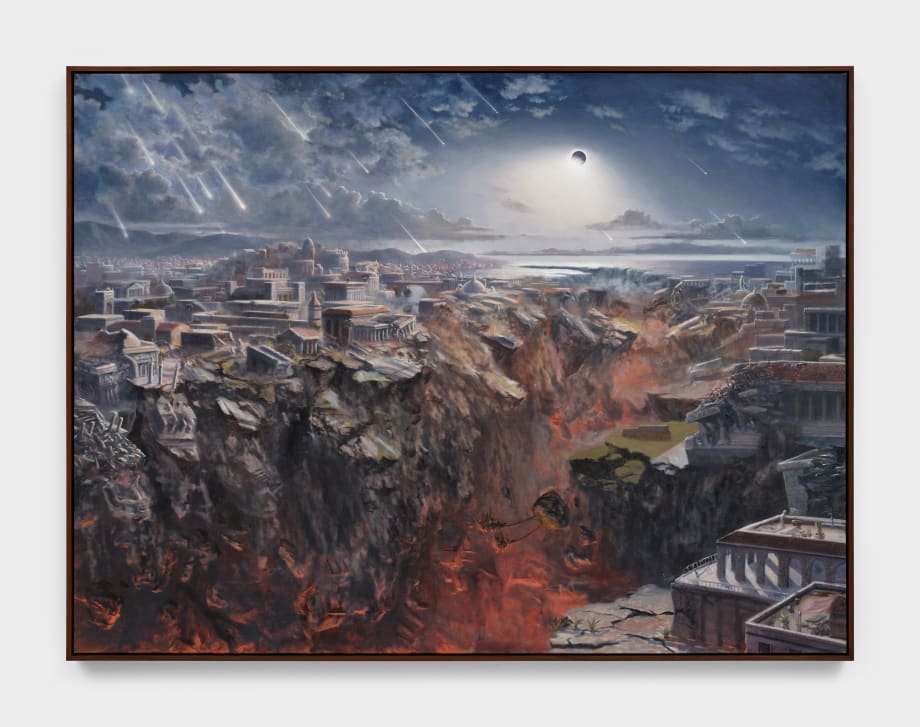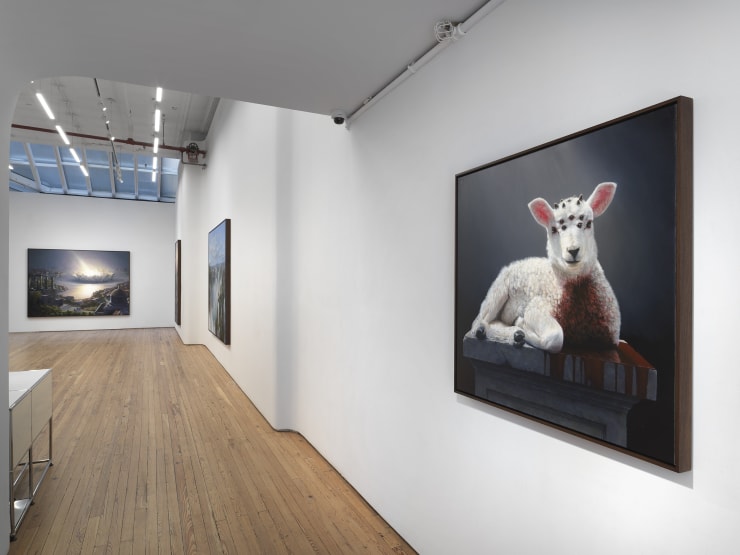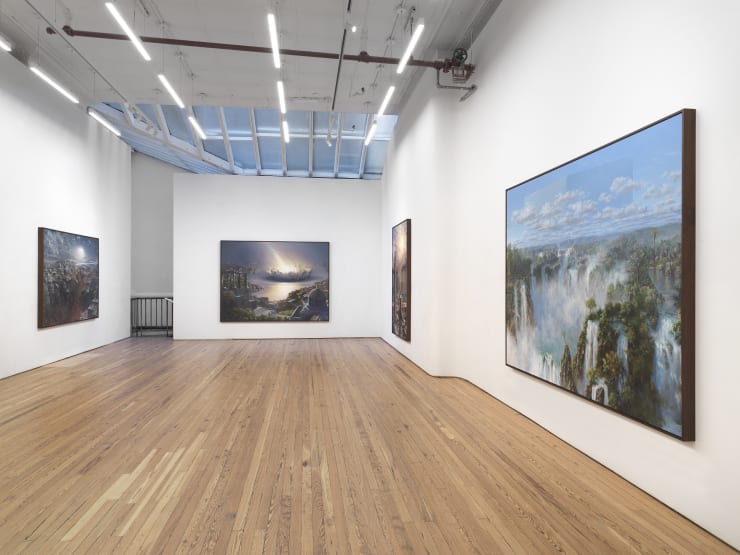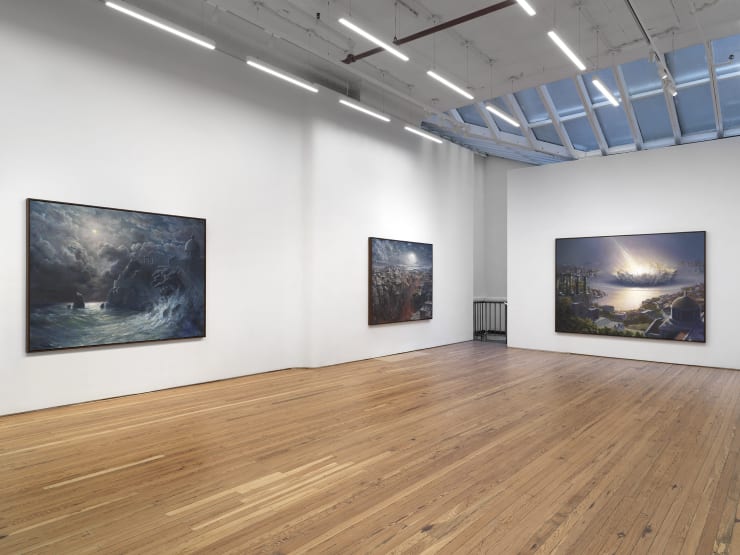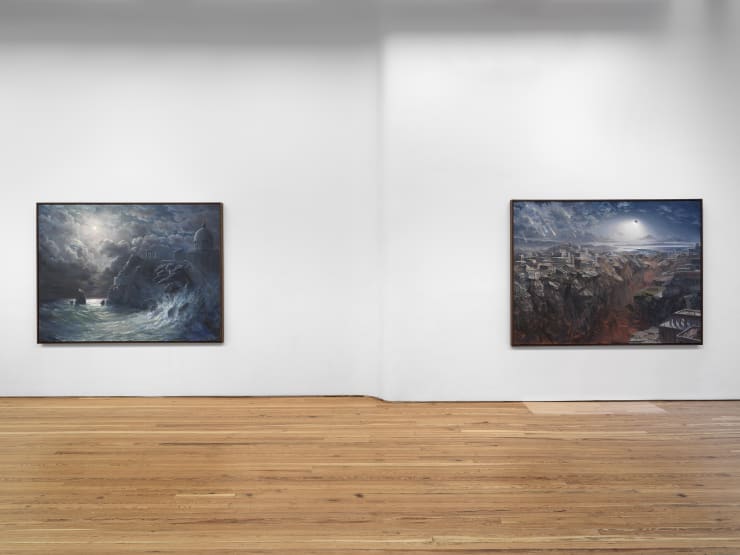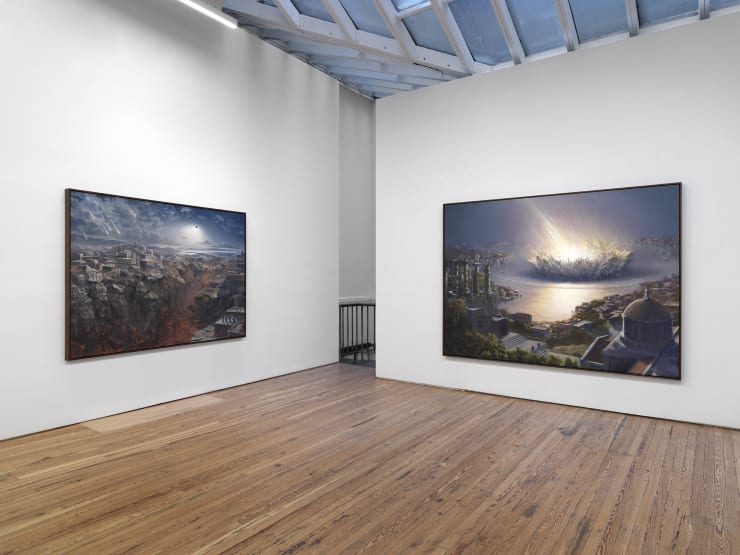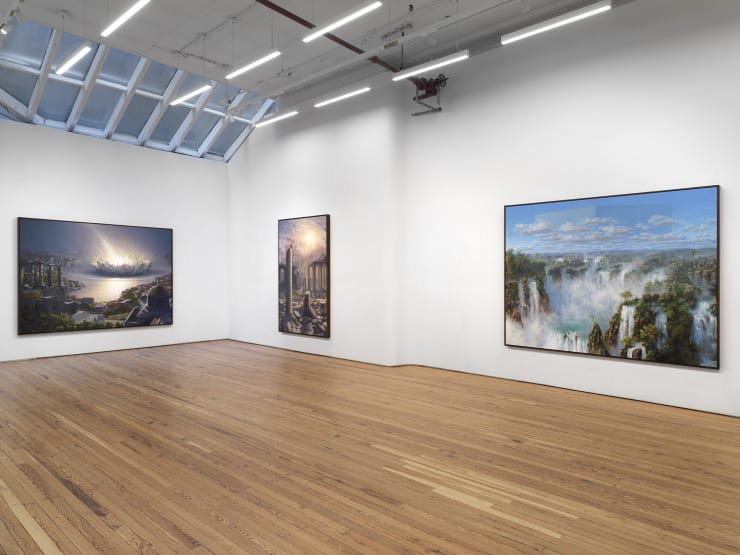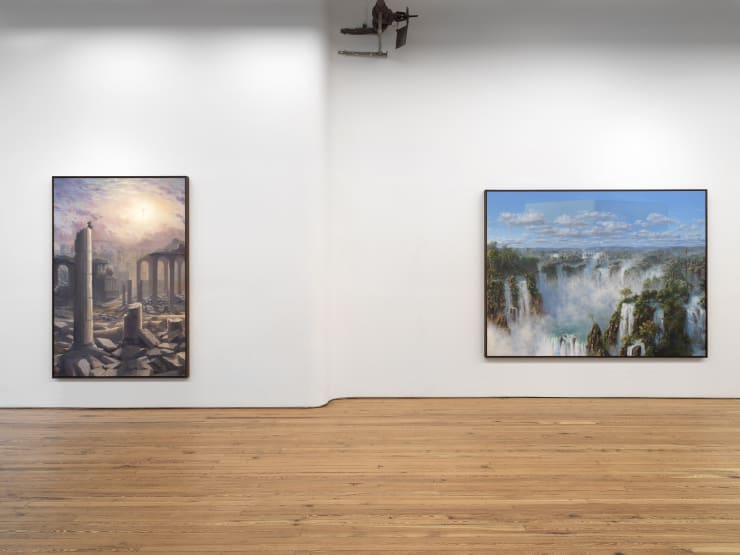Chad Murray "John of Patmos": New York
Sebastian Gladstone Gallery is thrilled to present, John of Patmos, a new series of six oil paintings by Chad Murray. The work deals with historical painting as a framework for uncertainty, taking the apocalyptic imagery of The Book of Revelation and considering how it has been shaped by artistic interpretation over time. This is not a religious exhibition, but a look at how familiar images persist, how they shift in meaning, and how painting itself functions as a record of those shifts.
Painters have returned to these scenes for centuries. John Martin, J.M.W. Turner, and Thomas Cole built elaborate worlds from The Book of Revelation’s imagery, emphasizing grandeur and finality. Their paintings reflected a 19th-century sense of drama, tying biblical events to anxieties of empire and industry. Earlier depictions, such as medieval manuscripts, Renaissance altarpieces, and Baroque engravings had their own purposes, reinforcing doctrine, moral instruction, or civic power. Even as historical conditions changed, the imagery remained recognizable, its function adjusting to the needs of the time.
Murray works within that history but without its certainty. The paintings follow a sequence: the lamb with seven eyes and seven horns, the falling star, the darkened sky, the abyss opening, the dragon rising, the great supper of god, and the descent of the New Jerusalem. These are familiar events, but they don’t unfold as grand declarations. Elements are obscured, forms break apart, landscapes dissolve. Meaning is deferred, held at a distance.
History painting, at its core, has always been a construction. Murray engages with its language while questioning its claims. The works in John of Patmos are not statements of belief, nor are they attempts to retell a known story. Instead, they treat history as something shaped, revised, and continually reinterpreted, a process that is as much about the present as it is about the past.
